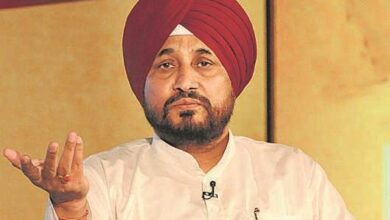H1N1 Surge at Hospitals in Delhi-NCR: Falling Mercury Causes an Increase in High Blood Pressure, Gastric, and Heart Emergencies
Hospitals in Delhi-NCR are reporting an increase in flu cases, particularly H1N1 infections, among the elderly and co-morbid individuals as the temperatures drop.

Experts in medicine tending to the patients told News18 that infections, which are more common in the winter, might take a long time to heal in older people, potentially leading to consequences.
One kind of Influenza A virus is the H1N1 flu, often known as the swine flu.
Serious instances need hospitalization; individuals recover in 3–4 days, but older people may need a week or more. Physicians attribute the lengthier hospital stays to the complex interaction between flu and bacterial infections, which prolongs healing periods.
The H1N1 flu often causes fever, sore throat, cough, runny nose, watery eyes, and muscular aches. Most hospitals in Delhi-NCR do COVID-19 testing on inpatients despite the fact that most patients have identical flu symptoms.
Experts see a spike in H1N1.
At the Sri Balaji Action Medical Institute in Delhi, Dr. Manisha Arora, the unit director of internal medicine, told News18 that the outpatient department handles 12 to 15 flu patients every day, with one-third of those cases necessitating hospitalization owing to a proven H1N1 infection.
“The emphasis is on treating confirmed positive cases, with seniors requiring oxygen support for super-added infections, often with comorbidities.”
Arora said individuals recover reasonably rapidly but underlying health conditions postpone recovery for the elderly, aggravated by super-added illnesses during the cold season, leading to elevated hypertension and chest infections.
The return of H1N1 patients was also verified by Dr. Manoj Sharma, senior physician in internal medicine at Fortis Hospital in Vasant Kunj.
Seasonal changes and harsh weather are known to bring with them an increasing risk of bacterial or viral infections. Yes, we do have H1N1 patients in the OPD, but as of right now, they are readily handled there, said Sharma.
Similarly, there has been a rebound in H1N1, H3N2, and common influenza among viral diseases, according to Dr. Sakshi Singh, consultant in the department of internal medicine at Amrita Hospital Faridabad in Faridabad.
Similar health problems occur in the cold temperatures. However, the frequency of viral infections impacting various healthcare systems has increased. They have been increasing health hazards along with the growth in pollution and poor air quality.
PAIN, HEART DIFFICULTIES, GASTRIC DIFFiculTIES, AND MORE
While H1N1 has been highlighted by experts due to sudden resurgence along with complications among elderly patients, other complications reported by patients include influenza, common cold, norovirus infections, hypothermia and frostbite, seasonal affective disorder (type of depression), asthma, respiratory conditions, heart-related issues and joint pain.
Amrita Hospitals’ Singh put the blame on the declining temperature and the weather.
“There are certain health issues that have increased as the weather gets colder and the number of chilly winds increases.”
The number of patients experiencing conditions including colds, coughs, upper respiratory infections, respiratory patient exacerbations, new viral diseases in youngsters, elderly patients, and immunocompromised patients has grown, according to her.
“Flaring up of joints issues and certain viral disorders and gastric infections are also on the rise. Additionally, there is a rise in the incidence of stroke, heart problems, and hypertension.
Fortis’ Sharma further elucidated that ailments including respiratory disorders and asthma, heart-related problems, and joint discomfort are linked to cold weather and that the number of cases often increases with the beginning of each season.







